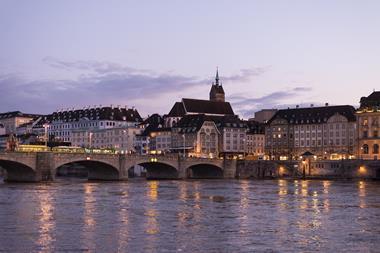SPH, the €10bn Dutch pension fund for doctors, cut out its defensive equity strategies from its portfolio last year.
In its annual report for 2016, it said that the expected added value in terms of risk and return did not outweigh “the complexity and limited manageability of the investments”.
SPH had invested €160m through PGGM’s Developed Market Alternative Equity fund, which deviates from the market capitalisation of the classic indices.
Its aim was to increase the stability of its equity portfolio while improving returns, and with a limited turnover, the scheme said. When it divested its holdings at November-end, the allocation’s year-to-date return was 10.1%.
In addition, SPH said it intended to fully divest its holdings in hedge funds, as the allocation’s expected added value did not outweigh costs, complexity, and its limited managebility.
By the end of 2016 the scheme had reduced its allocation to 0.9%. Last year, the hedge fund allocation generated a 2.6% return.
The doctors’ scheme posted an overall result of 8.5% for the year. It attributed the slight underperformance relative to its benchmark to the completion of the transition from active to passive mandates as well as a “badly performing” position in Chinese A shares, which it said was very difficult to divest.
Alex de Waal, SPH’s director, explained that the Chinese supervisor had set many requirements for the divestment.
SPH said the mandate still comprised €26m at the end of June 2017. Over the course of last year the mandate gained 4.1%, and it made a further 1.2% during the first six months of 2017.
According to the pension fund, equity in emerging markets, the US, and small caps (16.8%) had performed well. In contrast, Japanese equities hardly generated a return. Overall, the scheme’s equity holdings delivered 12.3%.
SPH added that it had reduced the country risk for its government bonds by diversifying into government issuance from Finland, Belgium, and Austria. It said bonds returned 6.7% in 2016 as a consequence of falling interest rates.
Emerging market debt yielded 12.2% thanks to the combination of falling interest rates and the appreciation of local currencies relative to the euro.
With a profit of 16.3%, commodities were the best returning asset class, largely due to rising oil prices.
The pension fund indicated that it wanted to increase its current 3.2% stake in infrastructure to 5% of its overall portfolio. In 2016 the allocation delivered a 10.6% return.
Private equity was the only asset class that contributed negatively to SPH’s overall result. The scheme said it was divesting its holdings. It reported a 17.8% loss on its two remaining positions, comprising 0.1% of its entire investment portfolio.
Last year, the GP scheme introduced a new steering model for its balance sheet, focusing on a reduced allocation to more risk-bearing assets – including equity and property – if its funding decreased strongly.
SPH said it had incurred asset management and transaction costs of 0.44% and 0.09%, respectively, while spending €570 per participant on administration.
The doctor scheme has 19,060 participants in total, of whom 11,030 are active GPs and 6,785 are pensioners.
At March-end, its coverage ratio stood at 129.8%. Last year, it granted its participants an indexation of 1.4%.






















No comments yet